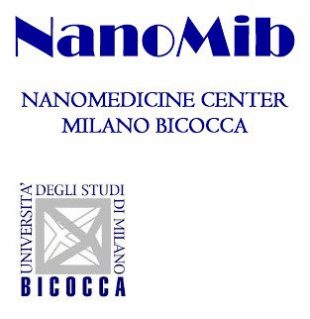 Giuseppe Chirico
Giuseppe Chirico
Giuseppe Chirico is currently professor of Applied Physics at the University of Milano-Bicocca (Dept. of Physics, School of Sciences). His activity covers biophysics, photonics and nanotechnology. He spent two postdoc periods at the European Molecular Laboratory in Grenoble (F) in 1990 on Neutron Scattering from DNA and at the German Cancer Research Center (DKFZ) in Heidelberg in 1993 on Brownian Dynamics of Chromatin. GC has been then visiting professor at the University of Illinois at Urbana-Champaign, Laboratory for Fluorescence Dynamics in 2000. Since 2000 GC is actively researching in nanotechnology applied to biophysics and medical physics, developing nanosensors for proteins based on the use of gold nanoparticles and non-spherical nanoparticles to be used as localized thermo-loaders for hyperthermia and temperature triggered drug release. GC is the group leader of the Biophotonics group at the Dept. of Physics, University of Milano-Bicocca. The group develops photo- and fluorescence correlation spectroscopies and applies them to study dynamics of biological systems and to in-vivo deep tissue imaging by means of non-linear optical microscopy. His research also covers numerical simulation of complex polymeric systems: supercoiled DNA, DNA chromatin, lymph node chemotaxis and red blood cells in capillaries. He is author of more than 160 publications, H=27, total citations 2600.
 Maddalena Collini.
Maddalena Collini.
Maddalena Collini graduated in Physics, PhD in Biophysics, is full professor of Applied Physics, University of Milano Bicocca, Dep. of Physics. MC is the PI of the Super-resolution microscope
financed in 2011 by the Università di Milano-Bicocca. Scientific background in time-resolved fluorescence spectroscopy techniques applied to the study of biosystems of different complexity. MC has a long experience in the application of fluorescence polarization anisotropy decay for detecting molecular diffusive motions in DNA or proteins. MC deeply applied fluorescence correlation spectroscopy in the photophysics characterizations of GFP mutants. MC has also applied fluorescence spectroscopy to study signaling or interactions in cells either employing FRET probes or calcium imaging. A parallel field of research also is devoted to characterize optical properties of nanoparticles and their cellular uptake exploiting their luminescence by non linear excitation. Since 2011, MC has been the PI of the super-resolution microscope based in STED (excited emission depletion ) technology that reaches image resolution of 60 nm as tested on single fluorescent molecules. Concerning the in vivo measurements, MC performs hemodynamics studies on model animal systems (Zebrafish embryos) in order to develop protocols of image analysis to be used in more complex systems. MC is author/co-author of more than 70 publications on scientific journals.
 Laura D’Alfonso
Laura D’Alfonso
Laura D’Alfonso graduated in Physics, PhD in Biophysics, is now associate professor of Applied Physics, University of Milano Bicocca, Dep. of Physics. The research activity of LD has mainly focused in molecular biophysics, and it has been devoted to the application of spectroscopic techniques to study the structural and dynamic properties of proteins, and to analyze their interaction, by combining experimental and theoretical-simulative approaches. Since 2001 LD collaborates to the development of a laboratory for advanced spectroscopy (LABS) where fluorescence techniques have been combined to non linear optical microscopy to perform experiments at high spatial and temporal resolution on the stability of biomolecules and on their interactions, down to the single molecule level or in cells or tissues, for biological and medical applications. LD has acquired experience in time resolved fluorescence spectroscopy and in in-vitro and in-vivo single molecules fluorescence. Moreover, LD has acquired expertise on advanced fluorescence techniques by employing non linear excitation to perform experiments of fluorescence correlation spectroscopy (FCS), fluorescence lifetime imaging (FLIM) and resonant energy transfer (FRET) in solutions and in cells. Hot spots of LD’s research have been the investigation of the internal photodynamic of proteins, the characterization of metallic or hybrid metal-organic fluorescent probes, and the development of nano-biosensors based on the lifetime changes of particular fluorophores, with several possible applications. LD is author/co-author of more than 50 publications on scientific journals.
Laura Sironi.
Laura Sironi graduated in Physics, PhD in Biophysics, is now Assistant Professor of Applied Physics, University of Milano Bicocca, Dep. of Physics. LS has a scientific background in advanced spectroscopic methods and in fluorescence techniques combined to linear and non linear optical microscopy for biological and medical applications. LS has acquired expertise in time resolved fluorescence spectroscopy (both lifetime and anisotropy decay) in-vitro and in-vivo (cells), in fluorescence correlation spectroscopy (FCS), fluorescence lifetime imaging (FLIM) and resonant energy transfer (FRET) in solutions and in cells. The research activity of LS is also devoted to the development of image analysis methods applied to data acquired by in-vivo and ex-vivo single and multi-photon excitation microscopy to extract cells dynamic/interaction parameters (cell tracking and morphology, host pathogen interactions in lymph nodes, study of the physical properties of tumor microenvironments) and hemodynamics in model and complex systems/organisms (microfluidic channels, zebrafish and hepatic microcirculation in mice). LS research interest is also focused on the study of the second harmonic signal generated by collagen in different tumour tissues (also by means of a novel phasor-based approach). Other topics of LS research are the characterization of optical and thermal properties of theranostic devices, based on gold/silver nanoparticles, and the study of their interaction with cells by means of image correlation spectroscopy techniques. LS is author/co-author of more than 40 publications on scientific journals.
